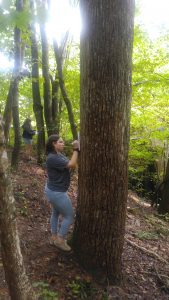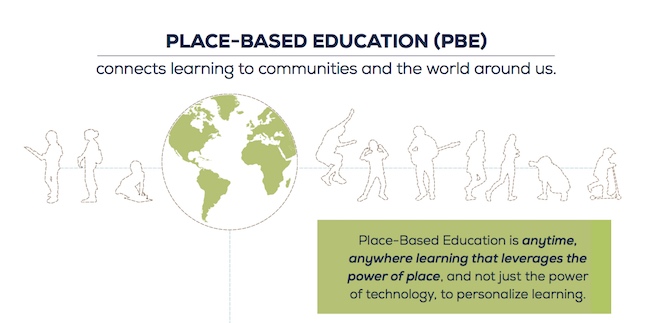At Hawbridge, our teaching philosophy calls for a place-based approach to learning, and our charter calls for a focus on environmental education. In English III — a course for juniors that uses American literature to develop reading and writing skills — we’re addressing these goals with a several-week project on nature and environmental writing. We’re reading texts from a variety of authors and genres: Robert Frost, W.S. Merwin, Walt Whitman, Teddy Roosevelt, N. Scott Momaday, Alice Walker, Janisse Ray, Aldo Leopold, Philip K. Dick, and Jack London. We’ll even hear a song on environmental justice from a local jazz/hip-hop fusion band. As we read and listen, we’re preparing to write. Our multi-genre writing project will ask us to create our own pieces, in the styles and forms that best suit our chosen audiences, answering for ourselves: what is our relationship to the natural world?
 On Friday, we took our first walk to Motes Creek along the Haw, just below the old hydro-electric dam. There we found a beautiful landscape that’s been shaped by the people who also helped develop our community. We found a quiet spot, took a breath to let go the thoughts of the day, and observed the natural world. And we wrote. Sometimes we were restless, and sometimes we settled in to our surroundings. But we had an experience.
On Friday, we took our first walk to Motes Creek along the Haw, just below the old hydro-electric dam. There we found a beautiful landscape that’s been shaped by the people who also helped develop our community. We found a quiet spot, took a breath to let go the thoughts of the day, and observed the natural world. And we wrote. Sometimes we were restless, and sometimes we settled in to our surroundings. But we had an experience.
On return, I observed students’ responses: re-bar and old shotgun shells noticed, artifacts from human activity. Ferns unfurling — can we really see them unfold before our eyes? A spider on the hunt in its web. A crawdad, observed for the first time. The volume of the water flowing over the dam after heavy rain. The effect of the brisk walk back on the breath and muscles. We’ll use those moments to help inspire our writing as we begin to develop ideas for our multi-genre project. The texts we’ll read will provide ideas for form and technique; we’ll let the space around us provide the imagery.

